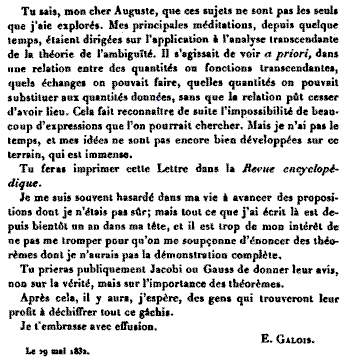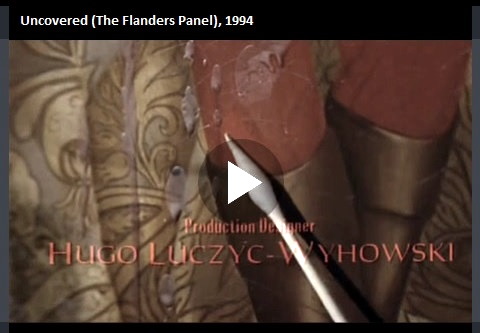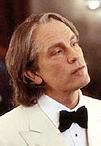See also Q Tip in this journal (Sept. 5, 2021).
Wednesday, October 13, 2021
Q is for Quelle
Monday, September 20, 2021
Saturday, November 28, 2020
Saturday, November 7, 2020
Q is for Quelle
Compare and contrast (data from Amazon.com) —

Update of 9:47 PM ET the same day —
Logo of the above publisher:
For remarks from the most recent equinox,
see posts tagged Abrams Eight.
Sunday, August 18, 2024
“Like a Kernel”

|
“The yarns of seamen have a direct simplicity, — Joseph Conrad in Heart of Darkness
“By groping toward the light we are made to realize
— Arthur Koestler, The Call Girls: A Tragi-Comedy, |
From an obituary of Alain Delon, who reportedly died today . . .
|
"He starred in the 1976 French best picture winner, 'Mr. Klein,' as a wartime German art dealer threatened by being mistaken for a Jewish man with the same name." |
See as well Felix Christian Klein in this journal.
And then there is being mistaken for a fictional archaeologist
with the same name.
Tuesday, July 12, 2022
Object Lesson: The Quelling
"The successful artist shares with the politician
a recurrent temptation to indulge in emotional claptrap.
Bernard Bosanquet in Three Lectures on Aesthetic (1915)
proposed that this urge to chase after tears or laughter
could be quelled by attaching the art-emotion to a particular object
and not a set of reactions. His consequent definition of art was
'feeling expressed for expression’s sake.' Notice, however, that
this is something only the deranged would dream of wanting in
real life. Our everyday expressions of feeling are spontaneous and
practical; they are never 'for expression’s sake.' By contrast,
aesthetic feeling is self-sufficient."
— David Bromwich in The Nation, July 11, 2022
A Particular Object —
"Tell it Skewb." — Motto adapted from Emily Dickinson.
Sunday, May 30, 2021
Framed
Related reading: "Frame Analysis" in this journal.
Update of Monday, May 31, 2021 —
For connoisseurs of bullshit —
"… it would have made for a memorable
photograph, the image preserved within
he confines of a four-by-six-inch print."
— Lincoln Perry on a remembered scene
in "If You Frame It Like That," an essay in
The American Scholar dated March 2, 2020,
linked to today at Arts & Letters Daily
(A website whose motto is VERITAS ODIT
MORAS , "Truth hates delay").
And then there is non-bullshit about a
four-by-six frame —

Bullshit addicts pondering the meaning of the letter "Q" may consult
"Q is for Quelle ," "Q is for Quality," and this journal on the above
American Scholar date — March 2, 2020.
Friday, December 18, 2020
Notes towards the Redefinition of Culture

In the altered headline above, " Q******* " may, if you like,
be interpreted as " Quellers ," an invented term for scholars
who investigate the origins of Christianity.
See the Log24 post "Q is for Quelle " (November 7, 2020).
Dan Brown, like the earlier novelist who wrote The Source ,
is such an investigator (of sorts), though not a scholar .
(For an example of actual scholarship , see the webpage
https://quod.lib.umich.edu/m/
middle-english-dictionary/dictionary/MED35525.
That page may be interpreted as putting the "hit" in "s***.")
Monday, November 9, 2020
Gospel Thriller
” He say ‘One and one and one is three’ ” — Song lyric
Related theology in memory of the late Paul Shanley —
“Q is for Quelle.” (November 7, 2020)
Monday, October 26, 2015
Expanding the Seagram Spielraum
From the previous post, Expanding the Spielraum —
"The knights and squires of nearby Ambras used to let their
steeds romp here, whence came the name Tummelplatz ."
— Quelle: Ludwig von Hörmann, "Der Tummelplatz bei Amras,"
in: Der Alpenfreund , 1. Band, Gera 1870, S. 72 – 73.

Expanding the Spielraum
Halloween meditation on the Tummelplatz at Innsbruck —
"Die Ritter und Knappen des nahegelegenen Ambras
pflegten hier ihre Rosse zu tummeln, woher sich auch
der Name Tummelplatz schreibt."
"The knights and squires of nearby Ambras used to let their
steeds romp here, whence came the name Tummelplatz ."
— Quelle: Ludwig von Hörmann, "Der Tummelplatz bei Amras,"
in: Der Alpenfreund , 1. Band, Gera 1870, S. 72 – 73.
See as well Sigmund Freud, Erinnern, Wiederholen und Durcharbeiten
(1914) —
"Wir eröffnen ihm die Übertragung als den Tummelplatz ,
auf dem ihm gestattet wird, sich in fast völliger Freiheit
zu entfalten, und auferlegt ist, uns alles vorzuführen,
was sich an pathogenen Trieben im Seelenleben des
Analysierten verborgen hat."
"We admit it into the transference as a playground
in which it is allowed to expand in almost complete freedom
and in which it is expected to display to us everything in the
way of pathogenic instincts that is hidden in the patient's mind."
This passage has been discussed by later psychotherapists,
notably Russell Meares. Dr. Meares, working from a translation
that has "playground" for Freud's Tummelplatz , uses Spielraum
in place of Freud's own word.


For related material in this journal, see Expanding the Spielraum.
An illustration from that search —
Thursday, October 11, 2012
Plots
In memory of Copenhagen saxophonist John Tchicai,
who reportedly died last Sunday, October 7, 2012—
Quoted in this journal on the reported date of his death—
But passion ever spins our plots,
And Gretchen is my treasure!
— Wolfgang Pauli character in
Faust in Copenhagen
Related material—
"Physik als Quelle der Spiritualität:
Ein Weg von 'Gretchen' zurück zu 'Beatrice'? "
by Bruno Binggeli
Monday, June 14, 2010
Theory of Ambiguity
Théorie de l'Ambiguité
According to a 2008 paper by Yves André of the École Normale Supérieure of Paris—
"Ambiguity theory was the name which Galois used
when he referred to his own theory and its future developments."
The phrase "the theory of ambiguity" occurs in the testamentary letter Galois wrote to a friend, Auguste Chevalier, on the night before Galois was shot in a duel.
Hermann Weyl in Symmetry, Princeton University Press, 1952—
"This letter, if judged by the novelty and profundity of ideas it contains, is perhaps
the most substantial piece of writing in the whole literature of mankind."
Conclusion of the Galois testamentary letter, according to
the 1897 Paris edition of Galois's collected works—

The original—
A transcription—
Évariste GALOIS, Lettre-testament, adressée à Auguste Chevalier—
Tu sais mon cher Auguste, que ces sujets ne sont pas les seuls que j'aie
explorés. Mes principales méditations, depuis quelques temps,
étaient dirigées sur l'application à l'analyse transcendante de la théorie de
l'ambiguité. Il s'agissait de voir a priori, dans une relation entre des quantités
ou fonctions transcendantes, quels échanges on pouvait faire, quelles
quantités on pouvait substituer aux quantités données, sans que la relation
put cesser d'avoir lieu. Cela fait reconnaitre de suite l'impossibilité de beaucoup
d'expressions que l'on pourrait chercher. Mais je n'ai pas le temps, et mes idées
ne sont pas encore bien développées sur ce terrain, qui est
immense.
Tu feras imprimer cette lettre dans la Revue encyclopédique.
Je me suis souvent hasardé dans ma vie à avancer des propositions dont je n'étais
pas sûr. Mais tout ce que j'ai écrit là est depuis bientôt un an dans ma
tête, et il est trop de mon intérêt de ne pas me tromper pour qu'on
me soupconne d'avoir énoncé des théorèmes dont je n'aurais pas la démonstration
complète.
Tu prieras publiquement Jacobi et Gauss de donner leur avis,
non sur la vérité, mais sur l'importance des théorèmes.
Après cela, il y aura, j'espère, des gens qui trouveront leur profit
à déchiffrer tout ce gachis.
Je t'embrasse avec effusion.
E. Galois Le 29 Mai 1832
A translation by Dr. Louis Weisner, Hunter College of the City of New York, from A Source Book in Mathematics, by David Eugene Smith, Dover Publications, 1959–
You know, my dear Auguste, that these subjects are not the only ones I have explored. My reflections, for some time, have been directed principally to the application of the theory of ambiguity to transcendental analysis. It is desired see a priori in a relation among quantities or transcendental functions, what transformations one may make, what quantities one may substitute for the given quantities, without the relation ceasing to be valid. This enables us to recognize at once the impossibility of many expressions which we might seek. But I have no time, and my ideas are not developed in this field, which is immense.
Print this letter in the Revue Encyclopédique.
I have often in my life ventured to advance propositions of which I was uncertain; but all that I have written here has been in my head nearly a year, and it is too much to my interest not to deceive myself that I have been suspected of announcing theorems of which I had not the complete demonstration.
Ask Jacobi or Gauss publicly to give their opinion, not as to the truth, but as to the importance of the theorems.
Subsequently there will be, I hope, some people who will find it to their profit to decipher all this mess.
J t'embrasse avec effusion.
E. Galois. May 29, 1832.
Translation, in part, in The Unravelers: Mathematical Snapshots, by Jean Francois Dars, Annick Lesne, and Anne Papillaut (A.K. Peters, 2008)–
"You know, dear Auguste, that these subjects are not the only ones I have explored. For some time my main meditations have been directed on the application to transcendental analysis of the theory of ambiguity. The aim was to see in a relation between quantities or transcendental functions, what exchanges we could make, what quantities could be substituted to the given quantities without the relation ceasing to take place. In that way we see immediately that many expressions that we might look for are impossible. But I don't have the time and my ideas are not yet developed enough in this vast field."
Another translation, by James Dolan at the n-Category Café—
"My principal meditations for some time have been directed towards the application of the theory of ambiguity to transcendental analysis. It was a question of seeing a priori in a relation between quantities or transcendent functions, what exchanges one could make, which quantities one could substitute for the given quantities without the original relation ceasing to hold. That immediately made clear the impossibility of finding many expressions that one could look for. But I do not have time and my ideas are not yet well developed on this ground which is immense."
Related material—
"Renormalisation et Ambiguité Galoisienne," by Alain Connes, 2004
"La Théorie de l’Ambiguïté : De Galois aux Systèmes Dynamiques," by Jean-Pierre Ramis, 2006
"Ambiguity Theory, Old and New," preprint by Yves André, May 16, 2008,
"Ambiguity Theory," post by David Corfield at the n-Category Café, May 19, 2008
"Measuring Ambiguity," inaugural lecture at Utrecht University by Gunther Cornelissen, Jan. 16, 2009
Wednesday, July 23, 2003
Wednesday July 23, 2003
Being Pascal Sauvage
Pascal
“Voilà ce que je sais par une longue expérience de toutes sortes de livres et de personnes. Et sur cela je fais le même jugement de ceux qui disent que les géomètres ne leur donnent rien de nouveau par ces règles, parce qu’ ils les avaient en effet, mais confondues parmi une multitude d’ autres inutiles ou fausses dont ils ne pouvaient pas les discerner, que de ceux qui cherchant un diamant de grand prix
Diamant
parmi un grand nombre de faux, mais qu’ ils n’ en sauraient pas distinguer, se vanteraient, en les tenant tous ensemble, de posséder le véritable aussi bien que celui qui, sans s’ arrêter à ce vil amas, porte la main sur la pierre choisie que l’ on recherche, et pour laquelle on ne jetait pas tout le reste.”
— Blaise Pascal, De l’Esprit Géométrique
La Pensée Sauvage
“….the crowning image of the kaleidoscope, lavishly analogized to the mythwork in a three-hundred-word iconic apotheosis that served to put the wraps on the sustained personification of “la pensée sauvage” in the figure of the bricoleur, in an argument developed across two chapters and some twenty pages in his [Claude Lévi-Strauss’s] most famous book….”
— Robert de Marrais in
Catastrophes, Kaleidoscopes,
String Quartets:
Deploying the Glass Bead Game
|
|
Chiasmus |
For more on pensée sauvage, see
“Claude Lévi-Strauss,
and the Ethnographic Journey.”















